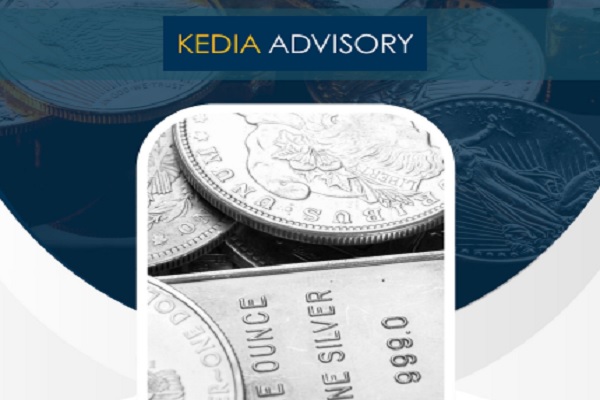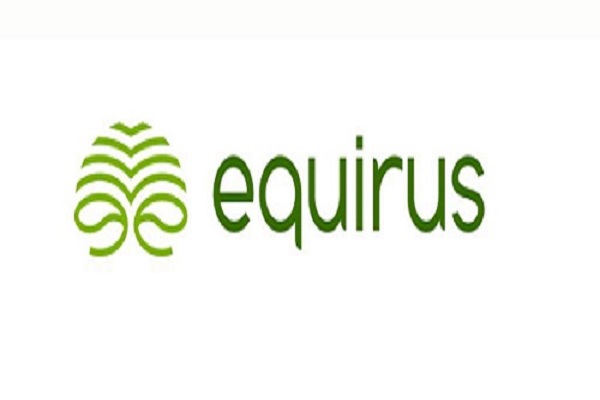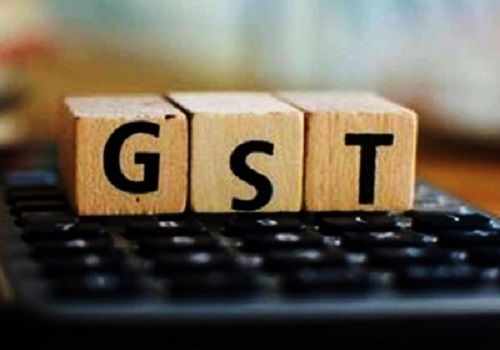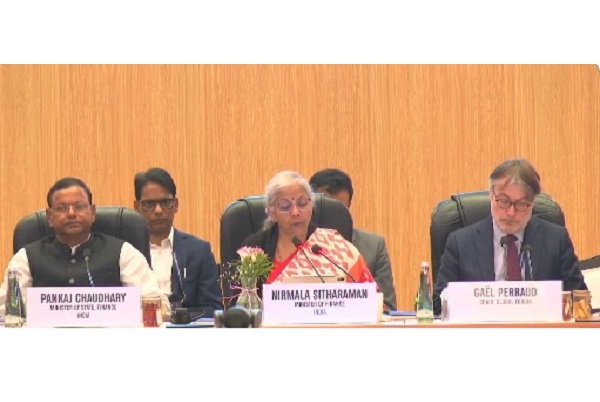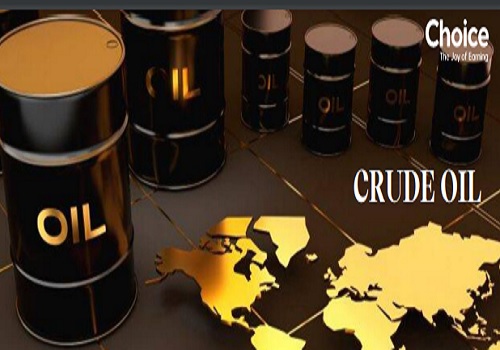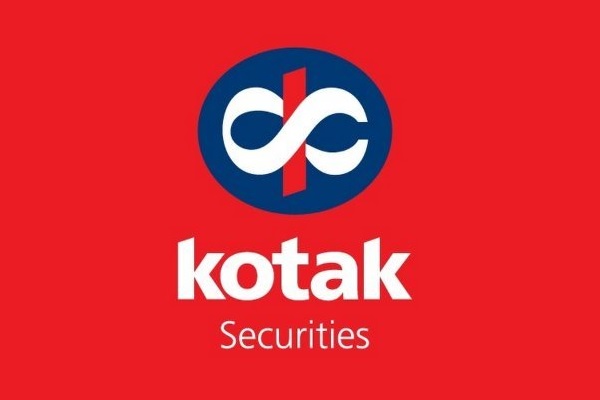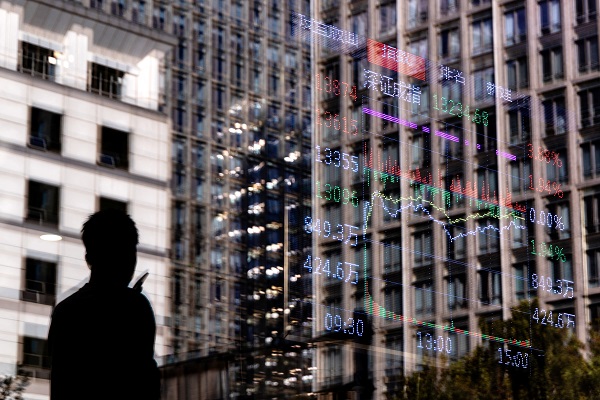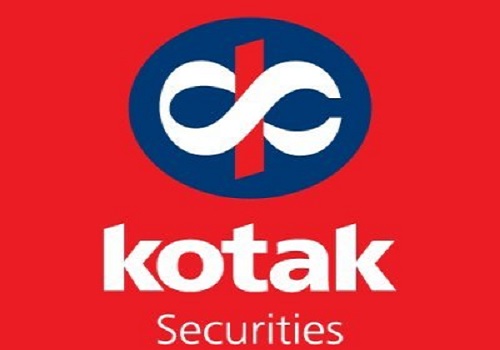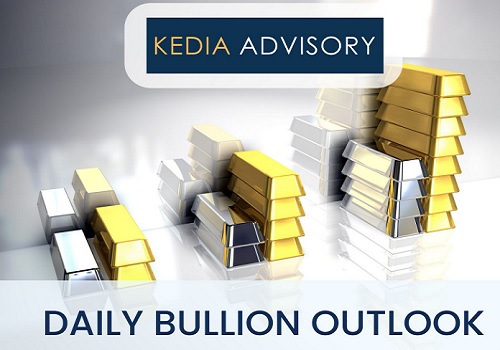Zinc trading range for the day is 290.7-297.9 - Kedia Advisory
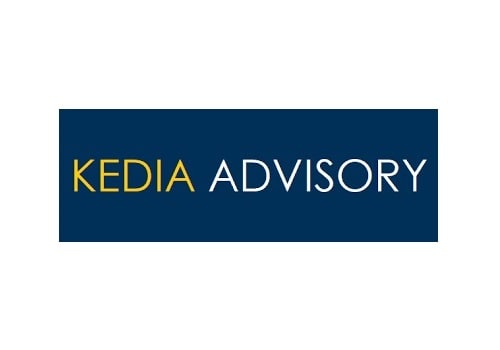
Gold
Gold prices surged by 1.81% to settle at 1,20,249, driven by renewed safe-haven demand amid escalating concerns over the prolonged US government shutdown, which was extended after the Senate failed to reach a funding deal. The shutdown has delayed key economic data releases, including the September non-farm payrolls report, leaving traders to depend on alternative labor indicators that suggest a weakening job market. This, in turn, has strengthened expectations of an imminent Federal Reserve rate cut, with markets pricing in a 95% probability of a 25 bps cut in October and an 84% chance in December. On the physical side, demand dynamics remained mixed. India’s gold demand rose despite record-high prices as festive buying boosted sentiment, with local dealers quoting a premium of up to $9 per ounce over official prices. India’s gold and silver imports nearly doubled in September compared to August. In contrast, China’s net gold imports via Hong Kong dropped 39.11% in August due to holiday closures, though Swiss exports to China surged 254%, signaling strong underlying demand. Singapore and Japan saw stable premiums ranging between $1–$2.20 per ounce. Technically, gold is witnessing fresh buying momentum, with open interest rising 1.26% to 15,784 lots. The metal has immediate support at 1,19,230, below which it may test 1,18,215, while resistance is seen at 1,20,930, and a break above this level could push prices toward 1,21,615.
Trading Ideas:
* Gold trading range for the day is 118215-121615.
* Gold prices surged Rs 1,20,000 amid growing worries over a prolonged US government shutdown.
* The shutdown was extended into this week after the Senate on Friday failed to advance competing plans to extend federal funding.
* Fed’s Miran pressed for an aggressive rate cut trajectory again, citing the impact of Trump administration's economic policies.
Silver
Silver prices rose 1.22% to settle at 1,47,519, supported by safe-haven demand amid the ongoing US government shutdown and growing expectations of further Federal Reserve rate cuts. The failure of lawmakers to secure a funding deal has delayed key economic data releases, including the September jobs report, reinforcing speculation of a quarter-point rate cut in October followed by another in December. Investors are also awaiting comments from Fed Governor Stephen Miran and Chair Jerome Powell for additional policy direction. On the fundamentals front, silver found support from tightening global supply conditions, with the Silver Institute projecting a fifth consecutive market deficit in 2025. UBS raised its silver price forecasts to USD 52 and USD 55 per ounce by mid-2026, citing robust investor interest, geopolitical tensions, and macroeconomic uncertainty. Silver-backed ETPs saw net inflows of 95 million ounces in the first half of 2025, pushing global holdings to 1.13 billion ounces, just 7% below the 2021 peak. Retail investment demand rose 7% year-on-year in India, reflecting strong price expectations, while Europe showed a modest recovery from lower levels. The global silver deficit is expected to narrow 21% to 117.6 million ounces this year as supply edges up and demand moderates slightly. Technically, the market is witnessing fresh buying, with open interest up 12.2% to 20,574 lots. Silver has support at 1,46,505, below which it may test 1,45,490, while resistance is seen at 1,48,255, and a breakout above could lead prices toward 1,48,990.
Trading Ideas:
* Silver trading range for the day is 145490-148990.
* Silver climbed as the ongoing US government shutdown and expectations of further Fed rate cuts boosted demand.
* Swiss multinational bank UBS has raised its silver price forecasts, flagging strong interest from investor demand.
* Investors also await remarks from Fed Governor Stephen Miran on Wednesday and Chair Jerome Powell for additional policy cues.
Crude Oil
Crude oil prices rose 0.96% to settle at 5,491, supported by a smaller-than-expected OPEC+ production increase of just 137,000 barrels per day for November, signaling the group’s cautious stance amid fragile global demand and persistent geopolitical risks. The restrained output decision, combined with Ukraine’s intensified attacks on Russian energy infrastructure, including the Kirishi refinery, fueled renewed supply concerns and helped maintain a bullish undertone in the market. Traders now await the API inventory report for further direction. According to the U.S. Energy Information Administration (EIA), crude inventories increased by 1.8 million barrels to 416.5 million in the week ending September 26, compared with expectations of a smaller 1 million-barrel rise. Gasoline stocks surged by 4.1 million barrels, while distillate inventories climbed by 578,000 barrels, indicating weaker refinery runs, which fell by 308,000 bpd as utilization dropped to 91.4%. At the same time, Cushing crude stocks declined by 271,000 barrels, highlighting regional drawdowns. OPEC maintained its global oil demand growth forecast for this year and next, citing steady economic expansion and robust second-half growth, while Saudi Arabia continues efforts to regain market share. Technically, the market is showing short covering, with open interest down by 5.13% to 13,524 lots as prices gained 52. Crude oil has support at 5,442, below which it may test 5,392, while resistance is seen at 5,536, and a move above this could open the door for a rally toward 5,580.
Trading Ideas:
* Crudeoil trading range for the day is 5392-5580.
* Crude oil prices gained amid lower-than-expected OPEC+ output hike
* OPEC+ will add oil output from November by 137,000 bpd.
* Ukraine continued to intensify its attacks on Russian energy facilities.
Natural Gas
Natural gas prices rose 0.57% to settle at 300, supported by a tighter-than-expected EIA storage build and strong LNG export demand. The latest EIA report showed a storage increase of 53 billion cubic feet (bcf) for the week ending September 26, well below expectations of 67 bcf and the five-year average of 85 bcf, signaling a tighter supply environment. Total inventories stood at 3.561 trillion cubic feet (tcf), about 0.6% above last year’s level and 5% higher than the seasonal norm. The smaller build reflected lower 48-state production easing from record highs and LNG exports reaching new peaks. Weather forecasts also lent support, with cooler mid-October temperatures expected to lift heating demand, even though early October warmth temporarily capped consumption. The EIA’s Short-Term Energy Outlook projected both U.S. natural gas output and demand to hit record highs in 2025, with production seen at 106.6 bcfd and consumption at 91.5 bcfd, before easing slightly in 2026. The agency expects LNG exports to rise sharply to 14.7 bcfd in 2025 and 16.3 bcfd in 2026, compared to a record 11.9 bcfd in 2024, underscoring strong overseas demand. Technically, the market is witnessing fresh buying, with open interest up 3.64% to 22,552 lots as prices gained 1.7. Natural gas has support at 295, below which it may test 289.9, while resistance is seen at 307.5, and a move above could push prices toward 314.9.
Trading Ideas:
* Naturalgas trading range for the day is 289.9-314.9.
* Natural gas ended with gains amid supply and demand cues
* EIA storage report shows smaller-than-expected build of 53 bcf
* Total inventories at 3.561 tcf, slightly above last year’s level
Copper
Copper prices eased 0.09% to settle at 989.15 amid profit booking, though downside remained limited by ongoing supply concerns from major producers Chile and Indonesia. The market drew support from expectations of tighter supply after Goldman Sachs, Citi, and Bank of America raised their price forecasts, citing production disruptions at Indonesia’s Grasberg mine and a weaker U.S. dollar. Goldman now sees copper at $10,500 per ton by 2026, while Citi expects prices to rally as high as $14,000 per ton next year, projecting a global deficit of 400 kilotons in 2026. Supply-side pressures intensified after Chile’s output dropped 9.9% year-on-year in August following an accident at Codelco’s flagship mine, while China’s refined copper output fell 5% in early September, removing nearly 500,000 tons from global supply. The International Copper Study Group (ICSG) reported a 57,000-ton surplus in July, but the broader market trend points toward tightening as earlier surpluses shrink sharply compared with last year. Meanwhile, China’s copper concentrate imports rose 8% in August to 2.76 million tons, indicating strong raw material demand even as refined copper imports declined by 11.5%. Technically, copper is under fresh selling pressure, with open interest up 6.48% to 7,917 lots, signaling new short positions. The metal has support at 982.5, below which it may test 975.7, while resistance is seen at 998.6, and a break above this level could lead prices toward 1,007.9.
Trading Ideas:
* Copper trading range for the day is 975.7-1007.9.
* Copper pared gains on profit booking after seen supported by concerns about supply.
* The disruption at Grasberg mine could result in a loss of 591,000 tons of copper output between September 2025 and the end of 2026.
* Goldman Sachs lifts 2026 copper price forecast to $10,500/t on Grasberg disruption
Zinc
Zinc prices slipped 0.49% to settle at 293.2 amid profit booking, after recent gains driven by sharply declining LME inventories, which have dropped over 61% this year to just 40,350 tons. Despite the pullback, sentiment remains broadly supported by expectations of two more U.S. Federal Reserve rate cuts this year and signs of stabilization in U.S. housing data. However, soft demand in China, particularly from the struggling real estate sector, continues to limit upside momentum, even as traders anticipate a seasonal recovery in October. On the supply front, conditions remain tight globally. LME zinc stocks have fallen to their lowest since May 2024, while the cash-to-three-month premium on LME zinc rose to $51 per ton, its highest since last October, underscoring supply pressure. In China, Shanghai Futures Exchange inventories fell 2.5% last week, even as August zinc output hit its highest level since Q1 2024. Domestic production may ease slightly in September, while potential capacity cuts among Chinese smelters could provide further support. Meanwhile, the ILZSG reported a global zinc market surplus of 30,200 tons in July, narrowing from the larger surpluses seen in 2024. Technically, the market is witnessing long liquidation, with open interest down 1.97% to 3,629 lots as prices eased 1.45. Zinc has support at 292, below which it may test 290.7, while resistance is seen at 295.6, and a move above this could lift prices toward 297.9.
Trading Ideas:
* Zinc trading range for the day is 290.7-297.9.
* Zinc dropped on profit booking after prices gained driven by sustained drops in LME zinc inventory
* Support also seen amid tightening supply conditions in China.
* Market expectations of two further Federal Reserve rate cuts this year, also supported prices.
Aluminium
Aluminium prices rose 0.64% to settle at 261.35, supported by supply concerns and improving demand as operating rates strengthened. Persistent supply threats, including disruptions in Guinea and limited Chinese output, underpinned prices. China’s manufacturing PMI remained below the 50-mark at 49.8, reflecting subdued industrial activity, yet production constraints continue to offer price support. Chinese aluminium output is nearing its annual cap of 45 million tons, curbing further supply growth, while Guinea Alumina’s loss of mining licenses could disrupt ore supplies to major producers such as Emirates Global Aluminium. Globally, aluminium supply remains tight. According to WBMS, the world aluminium market posted a deficit of 119,900 tons in July and 985,300 tons from January to July 2025. LME aluminium inventories plunged by nearly 100,000 tons to 375,000 in early September due to speculative buying and strong physical demand. Global primary aluminium output rose modestly by 0.9% YoY in August to 6.277 million tons, while China’s August production increased 1.22% YoY. On the trade front, China exported 542,000 tons of unwrought aluminium in July, while imports in August surged 12.9% YoY to 320,000 tons, indicating robust domestic consumption. Technically, aluminium is under fresh buying, with open interest up 2.55% to 4,590 lots. The metal has support at 259.2, below which it may test 257, while resistance is seen at 263.8, and a break above could push prices toward 266.2.
Trading Ideas:
* Aluminium trading range for the day is 257-266.2.
* Aluminium gains supported by both supply concerns and strong demand as operating rates improve.
* Support also seen due to persistent threats to supply.
* Global primary aluminium output in August rose 0.9% year on year to 6.277 million tonnes
Turmeric
Turmeric yesterday settled lower by 1.62% at 11,780 as higher acreage and favorable rainfall during the sowing season weighed on sentiment. However, losses were limited as excessive rainfall in key growing regions, particularly Nanded, damaged nearly 15% of the standing crop, raising quality concerns. The IMD’s forecast of normal to below-normal rainfall across parts of South India has also heightened worries for growers. Despite higher acreage—estimated to rise 15–20% year-on-year to 3.30 lakh hectares in 2024–25 from 3 lakh hectares last season—market arrivals remain subdued, and farmer-held stocks in Warangal are nearly exhausted. At the Duggirala market, fresh turmeric continues to attract strong buyer interest, with new crop fetching premiums over older stocks due to superior quality. Daily arrivals range between 1,000 and 1,200 bags, with 50–55% of the new crop already traded, suggesting steady market activity despite the end of the season. Government procurement initiatives, such as Himachal Pradesh’s program promoting natural farming, are expected to lend further support. On the export front, shipments during April–July 2025 rose 2.29% year-on-year to 63,020 tonnes. However, July exports dipped marginally by 0.27% from the previous year but improved 9.31% month-on-month, indicating improving trade momentum. Technically, the market is under long liquidation as open interest dropped sharply by 14.54% to 9,430, reflecting profit booking pressure. Prices are finding support at 11,610, and a break below could test 11,440, while resistance is seen at 11,960, with a move above likely to lift prices toward 12,140.
Trading Ideas:
* Turmeric trading range for the day is 11440-12140.
* Turmeric dropped amid increase in acreage due to favourable rains during the current sowing season.
* While downside capped as recent rainfall has caused damage to standing turmeric crops in major growing regions.
* Recent heavy rainfall in Nanded has adversely affected the region's turmeric cultivation, damaging approximately 15% of the crop area.
* In Nizamabad, a major spot market, the price ended at 12755.5 Rupees dropped by -1.2 percent.
Jeera
Jeera prices edged slightly higher by 0.03% to settle at 18,945 amid mild short-covering after recent losses, as traders engaged in low-level buying. Earlier pressure in prices came from weak domestic and export demand following the end of the retail season, along with comfortable supplies and ample carry-forward stocks. The GST Council’s decision to lower the GST rate on jeera to 5% is expected to support domestic consumption and FMCG exports, which may provide a cushion to prices in the coming sessions. Traders indicated that demand from overseas buyers remains sluggish, even as geopolitical tensions in key producing countries such as Syria, Turkey, and Afghanistan have curbed their supply potential. India’s production for the 2024-25 season is estimated at around 90–92 lakh bags, down from last year’s 1.10 crore bags, with Gujarat contributing about 42–45 lakh bags and Rajasthan about 48–50 lakh bags. Meanwhile, jeera exports during April–July 2025 fell sharply by 19.81% to 73,026 tonnes compared to 91,070 tonnes last year, reflecting muted international demand. July exports were down 20.83% year-on-year, further weighing on market sentiment. In the Unjha spot market, prices slipped by 0.77% to 18,909.65 amid limited trade. Technically, the market is under short covering as open interest declined by 3.39% to 3,081 while prices gained 5. Jeera is finding support at 18,680, and a break below could push prices to 18,400, while resistance is seen at 19,120, with a move above likely to test 19,280.
Trading Ideas:
* Jeera trading range for the day is 18400-19280.
* Jeera settled flat on low level buying after prices dropped due to weak domestic and export demand
* In July 2025 around 13778.60 tonnes of jeera were exported as against 16,322.06 tonnes in June 2025 showing a drop of 15.58%.
* GST council lowers GST rate to 5% which will support FMCG exports & domestic demand.
* In Unjha, a major spot market, the price ended at 18909.65 Rupees dropped by -0.77 percent.
Views express by all participants are for information & academic purpose only. Kindly read disclaimer before referring below views
